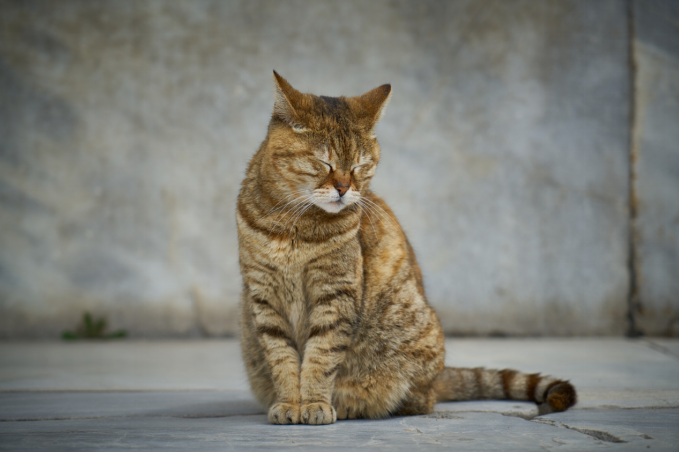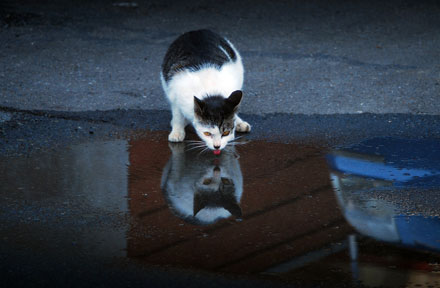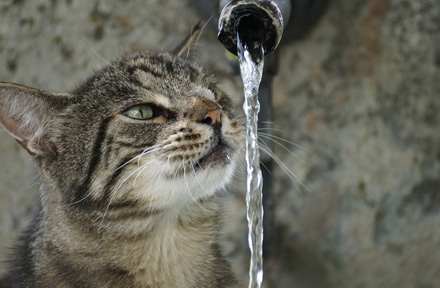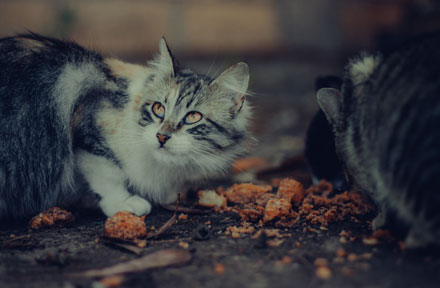Jun 07, 2025
Author:Amanda Lyu

The Sphynx catches the eye because it looks hairless, yet its skin shows the same hues and patterns that grow on the coats of other breeds. Learning about sphynx cat colors helps owners choose, care for, and even show these special cats. This guide walks through every shade and pattern you may see, explains how color appears on skin, and shows why color knowledge matters for health and breeding. The language stays clear, direct, and professional, so any reader can follow along.
Most cats wear their pigment on fur. The Sphynx wears much less fur, so color shows right on the skin. Tiny down may cover the body, but the base tone comes through, and the pattern lines stand out. A cream Sphynx looks peach. A black Sphynx looks like polished slate. Judges at cat shows read these shades the same way they read fur coats.
Melanin sets the base color. Eumelanin makes black, chocolate, or blue. Phaeomelanin makes red or cream. Genes blend these pigments, then spotting, dilution, smoke, or tabby genes add pattern. Because the skin sits in plain view, owners often spot changes early, whether normal aging or a health flag such as a rash.
Solid means one even shade, though light and shadow can play on folds. Each shade may show with or without white spotting.
Black skin looks dark gray when the cat lies in sunlight. Some owners like to read more about black cats because myths once chased them. Simple care keeps the skin glossy.
Blue comes from the dilute gene acting on black. The skin holds a cool bluish slate tone. It pairs well with green or gold eyes.
Chocolate rises from a warm brown eumelanin variant. The shade recalls milk chocolate candy.
Lilac, or nder, is a dilute of chocolate. The skin looks pale gray with a pink hint.
Red Sphynx cats look sun-kissed. The strong phaeomelanin gene makes bright salmon skin.
Cream dilutes red. The skin appears pale ivory peach. Owners watch sun exposure because fair skin burns faster.
A white Sphynx lacks pigment. The skin shows faint pink from blood flow. White cats with blue eyes may need screening for deafness, a trait linked to the dominant white gene.
Tabby genes write stripes, whorls, or spots on pigment. Without fur, the lines lie flat and bold. Readers who enjoy striping can learn more about the tabby pattern in standard-coated cats, many points apply here too.
● Classic: Wide swirling lines form a bull’s-eye on the flank.
● Mackerel: Narrow straight lines run down the body like fish bones.
● Spotted: Spots break the side lines into dashes.
● Ticked: Fine bands cover each hair in other breeds; on a Sphynx, ticking shows as even sand-like shading with faint stripes on legs and tail.
When shows call for clarity, breeders may work to keep lines crisp by pairing clear-marked parents. Understanding sphynx cat colors in tabby form lets a judge score accuracy for each pattern.
White spotting genes place stark patches. A bicolor Sphynx may show any base shade with white socks, mask, or belly. A van pattern leaves only color on head and tail. Harlequin sits between, with several color islands on a white field.
The spotting gene tracks with health facts as well. Extreme white cats may need extra ear care to avoid sunburn starting on thin pink tips. Good skin routine plus water fountain care keeps hydration strong, which aids skin repair.

A tortoiseshell mixes black (or chocolate, blue, lilac) with red or cream. The mix spreads in small patches, often split down the back. A calico adds white, so large red and black islands sit on a white base. Learn more about tortoiseshell cats or the finer points of the calico pattern to see how these genes juggle color.
Almost every tortie or calico Sphynx is female. The color genes ride the X chromosome, and males have only one. A rare male tortie has XXY makeup and may be sterile, so breeders keep him as a pet, not a stud. Owners may decide to spay or neuter pets for simpler life and health.
The Himalayan gene causes temperature-sensitive pigment. Warm body parts stay pale; cooler points—ears, mask, feet, tail—darken. On a Sphynx, these contrasts look softer than on fur breeds, yet you can still tell seal, chocolate, blue, or lilac points. Mink sits between point and sepia for strength, while sepia spreads color lighter than solid but darker than point.
Kittens may appear close to white, then darken for two years. Owners curious about this change often also ask when eye hues shift; see this post on eye color change for context.
Smoke kittens look solid until they stretch. Then you see a pale base as folds pull skin. The smoke gene adds a silver under-tone by turning half the hair shaft—or for the Sphynx, half the skin layer—lighter. A shaded Sphynx shows more of that pale base, so the cat appears lighter overall with darker tips. A reader can look at the smoke coat in other breeds to picture depth.
When judges grade smokes, they roll skin gently to view contrast. Owners who want the drama of smoke shades make sure bright light shows the dual tone well.
Color genes themselves rarely harm, yet light skin burns faster than dark. Red and cream cats often need cat-safe sunscreen when they sit in sunny windows. White spotting on ears faces the same risk. Deep skin checks each week prevent problems.
Hydration supports skin health. Many Sphynx owners switch to auto feeders and water fountains so fresh water flows all day. They may also set a timed cat feeder for even meals and steady weight. These habits help protect kidney health, which ties to urine balance and skin moisture.
Fleas stand out fast on bare skin. Owners who spot bumps read this guide on fleas on cats and treat right away.
Color does not drive acts like pooping outside the box, yet some readers cross-search issues such as pooping on the bed when stress rises. Good routines that keep your cat healthy cut many risks.
A Sphynx needs weekly baths because oil gathers on skin. Dark shades may hide oil longer, but they still need cleaning. Light shades show grime fast. Warm water and mild baby shampoo do the job. Rinse well, then pat dry.
Owners who travel with a cat pack soft wipes to remove oil on trips. They avoid strong sun in the car, since glass magnifies rays on pale skin.

Keep nails clipped and clean folds between toes. Oil or litter dust settles there. Some cats dip paws in water bowls, a habit linked to play or whisker strain. A fountain can help.
Newborns often show their final pattern but in muted form. Pointed kits look almost white. Smoke kits seem solid. Owners note base tone during cuddles.
Melanin ramps up. Pointed kits start to darken on ears, mask, tail. Tabby lines sharpen. Tortie patches piece together.
Dilute shades may lighten a bit as kittens lose any sparse birth fur. Eye color locks in. Coat texture remains sparse, yet some grow peach fuzz on back and tail.
Keep a photo log. Early shots help breeders map outcomes and improve plans for future litters. Accuracy in sphynx cat colors helps maintain breeding programs at a high standard.
Associations sort Sphynx into color divisions similar to coated breeds. CFA and TICA both group solids, tabbies, points, and so on. Judges score for even tone, sharp edges on patterns, and correct nose leather and paw pad shades. Skin health and muscle tone count too.
Show handlers often wipe skin with a damp cloth right before ring time. They avoid oil that dulls color. Small amounts of cornstarch powder can reduce shine on very dark cats.
Breeders may feel tempted to chase rare shades, yet health should lead. Genetic tests screen for hypertrophic cardiomyopathy and other risks first. After health, breeders match cats to improve structure, then color.
Color dreams must never override welfare. A strong breeding plan sets clear goals, tracks kittens long term, and places every pet in a caring home. People who breed only for odd blends may slip on records or skip tests. The Sphynx community urges full transparency.
|
Color Group |
Sun Care |
Cleaning Note |
Extra Tip |
|
White & Cream |
Use cat-safe sunscreen on ears and nose |
Inspect pink skin weekly |
Add UV-filter window film |
|
Red & Tortoiseshell |
Watch for redness after sun naps |
Use oatmeal wash for sensitive skin |
Keep a light cotton shirt for walks |
|
Black & Blue |
Oil build-up can hide under dark tone |
Wipe with damp cloth between baths |
Check folds with flashlight |
|
Point & Mink |
Color shows more on cool areas |
Dry fully after bath to avoid chill |
Keep home warm to keep tone light |
Color is only one part of the Sphynx story. Skin shade may guide grooming, but the cat’s joy rests on total health. Owners often add an auto feeder to stop scarf and barf, then watch weight. Strong hydration habits stem from choosing the right fountain and knowing how to train a cat to use a water fountain.
Knowing sphynx cat colors helps you spot rashes early, plan show careers, and talk with breeders. Yet play, vet visits, and mental fun matter just as much. Readers who want more enrichment tips can see ways to keep your cat entertained.
Color draws us, but the Sphynx bonds through warm skin, busy eyes, and bold spirit. Let knowledge guide you so the beauty of sphynx cat colors can shine in harmony with health and happiness.
Label:
Popular Post

What to Feed a Sick Dog With No Appetite? [2025 Guide]
May 16, 2023

Troubleshooting Common Issues with Automatic Pet Feeders: Tips & Tricks for Pet Owners
Oct 26, 2023

Why Does My Cat Cough After Drinking Water? 8 Potential Reasons
Mar 13, 2023

Why is My Cat Throwing up Water? Top 5 Causes Here
Feb 08, 2023

My Cat Only Eats A Little at A Time - What to Do?
Feb 27, 2023
$99.99
$129.99
Copyright © 2025 WOPET. All Rights Reserved.